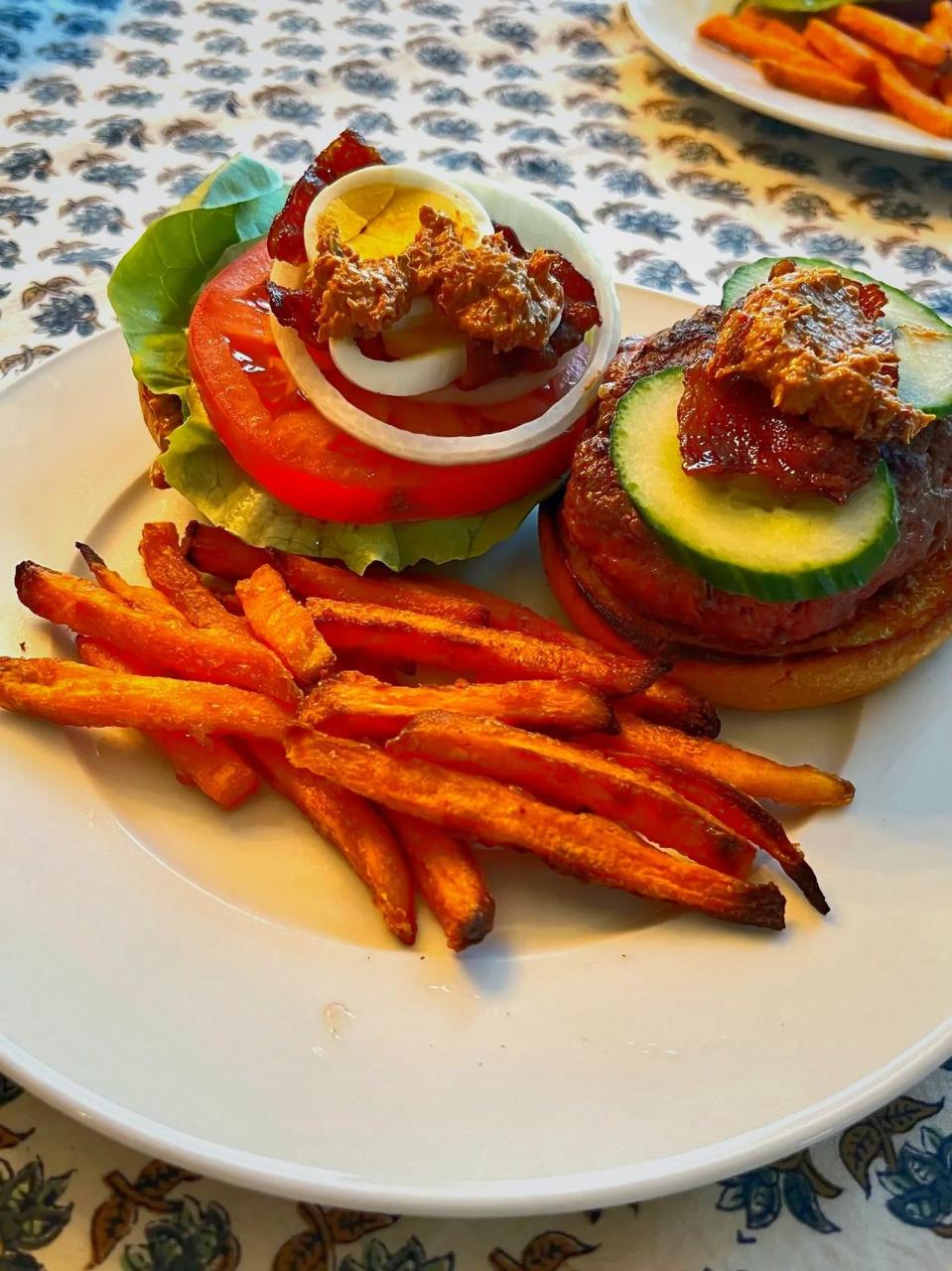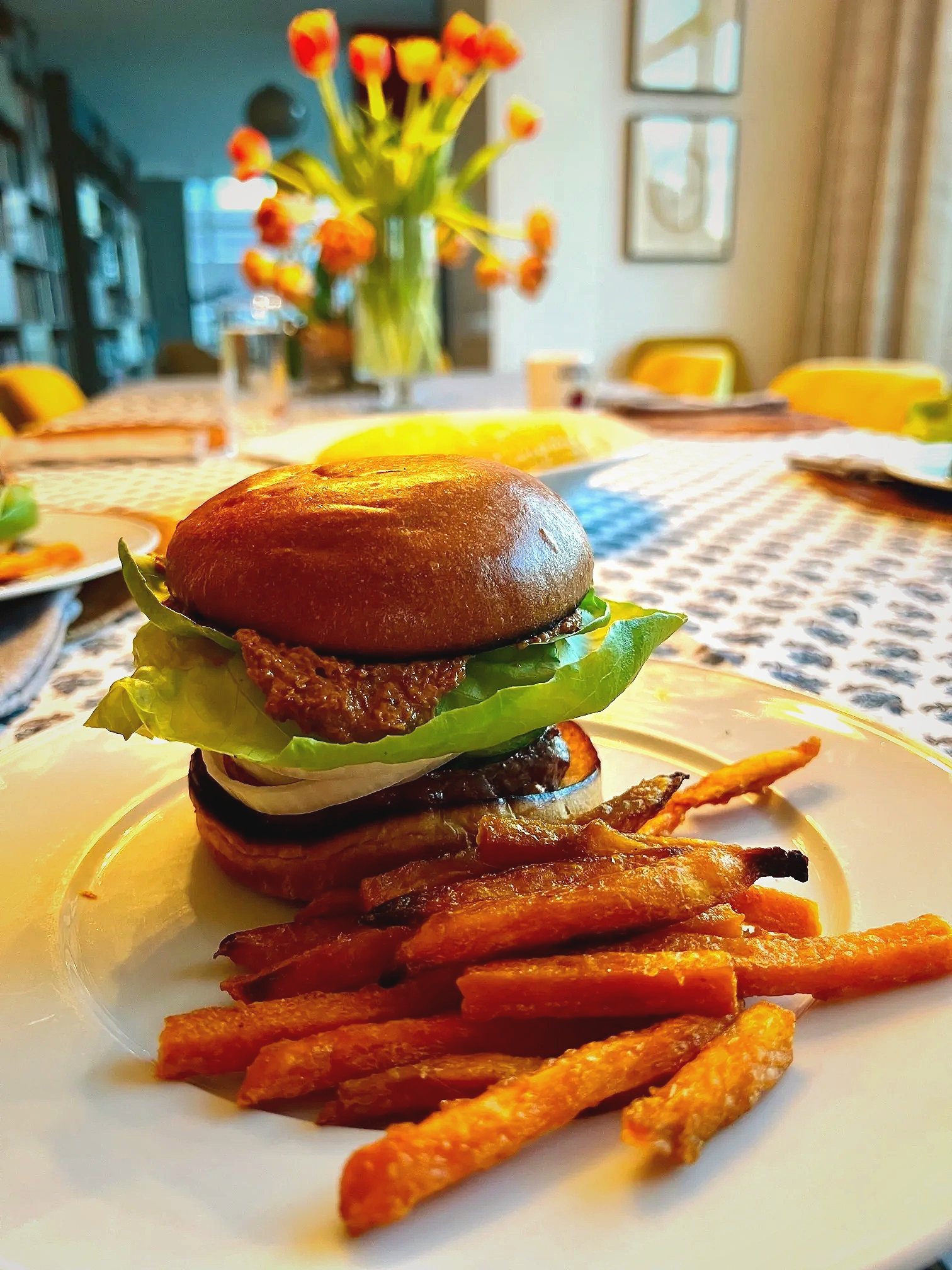My rendang recipe is non-conventional. Here is a disclaimer, I am not Indonesian. That said, my cousin has just added an essay in the second print of my updated cookbook, where he states that Peranakans are actually descended from the indigenous Indonesians, during a time when Nusantara was nebulous. That probably explains why many Peranakan families cook rendang, but as far as I can recall, ours is a bit saucier, very much in line with our Peranakan reputation.
This discourse seeks to explain my personal theories and I may wrongly interpret facts gleaned from several Indonesian cookbook tomes. So I tread carefully. Furthermore, I have since realised that my rendang uses a braising method which is the opposite of how rendang is typically prepared, boiling that transitions to frying in the meat’s own oil and that of the coconut.
Rendang is synonymous with Indonesia. It is derived from the matrilineal Muslim Minangkabau community of West Sumatra. Historically, they cooked rendang using the tough water buffalo meat. Traditionally, this meat is simmered for many hours (8 to 10) to tenderise, reheating over many days because there’s just a lot of meat to go around. It was, more importantly, a way to preserve meat without refrigeration, to the point that it could be taken along as essential food for pilgrimages and travels.
Rendang also rose in popularity because Padang, a provincial city of West Sumatra, is known for entrepreneurial restaurateurs who proliferated across the archipelago and internationally and transported their regional cuisine.
According to culinary master William Wongso, there are at least 150 Western Sumatran recipes for rendang, but to be defined as such, the spices and coconut milk have to be caramelised. He cooks his spice paste by adding the coconut cream (and includes the Makrut lime leaves, lemongrass and tamarind). When the mixture boils and the oil separates, he then adds the cubed beef rump. It is slow-cooked in the oven, unlidded for close to 2 hours and then slow-cooked again in a wok over medium heat until the meat turns dark brown and is caramelised and tender. As the beef gets reheated over several days, the meat just gets darker and darker. To him, rendang is never really red, yellow or green.
From “Rendang: Minang Legacy to the World” by Reno Adam Suri, there are three official stages to making a proper rendang:
- Gulai – a familiar word that is often associated with ‘curry’ – implies boiling the spice mix in the coconut milk. When the colours emerge from the turmeric and the red chillies and the oil seeps out from the coconut milk when it reaches boiling point, this stage is considered gulai. (Many recipes instruct you to boil the meat with the coconut milk from the get go here.)
- Kalio – without further heating, the coconut milk is supposed to start caramelising and the sauce thickens more than at the gulai stage, with a ‘light brown hue’. (This can take close to 2 hours.) Reddish bubbles appear to indicate that the oil from the coconut milk has split and is rising to the surface. This is also the stage when meat is sometimes added here in the recipe.
- Rendang – the coconut milk is supposed to have mostly evaporated (the heat is turned up to medium-high) and all that is left is the sugary residue of the coconut that caramelises to a very reddish-brown, also leaving the mixture more oily. (The meat transitions from having been boiling, to sautéing. Stir the beef occasionally so that it does not stick to the bottom of the pan. This phase could be an additional 30 minutes.) The meat will also be expected to be tender and will turn a darker brown.
Sri Owen, the doyenne of Indonesian cuisine in Britain, clarifies that “kalio is simply rendang before all the coconut milk has been absorbed by the meat”. Her recipe is from her paternal grandmother where she combines her spice paste, coconut milk, meat and the rest of the ingredients in a pan to cook. (She also adds a little of the coconut milk when blending the spice paste.) She cooks the meat uncovered over medium heat until bubbles appear and the coconut milk is thick and much reduced. Then she transfers the meat to a wok to continue the cooking until what is left is oil residue. Sri Owen suggests beef types such as brisket, chuck or silverside but has tried cooking rendang with kangaroo meat, jackfruit, pork and lamb.
Lara Lee, in her book “Coconut and Sambal”, describes kalio such as “depending on the oil content of your coconut milk, this may be a subtle film of oil or there can be a pool of it.”
Kalio happens to be the kind of consistency that I am familiar with. And it could well be explained by the fact that my recipe stems from a Javanese version perhaps? Many regions outside of West Sumatra are fine with a kalio kind of rendang. The habit – which I adopt too – is to stop the cooking of the beef when it looks like a kalio stage, then to let it rest overnight and re-heat again the following day. The meat gets tastier as the flavours seep into the meat, and as the reheat carries on, the gravy thickens even more, finally reaching that ‘drier’ stage which most associate with rendang.
The gold standard for rendang is a dish comprising thick cubes of beef with an oily sheen, fork- tender and tasty to the core, infused with the spices that resonate rendang – a melange of lemongrass, galangal, ginger, garlic, shallots, dried chillies and tamarind. But pop into a mediocre standard Indonesian cafe and chances are, the meat is dry because it’s been warmed up way too often. In my experience, this kind of rendang has often been fewer hits and more misses. Maybe there were shortcuts that compromised the end result. That could have ranged from a different kind of beef cut or the wrong cooking techniques where the heat made the outer layers dark brown but the interior underdone, tough and chewy.
Hence, my affinity for the rendang I have always known and loved, with a bit more gravy to spread over my white rice.
My mother learnt to refine her rendang recipe with tutorials from Indonesian ladies who taught cookery classes. I have tweaked it further and contravened cardinal rules by braising instead of reverse-braising as rendang techniques seem to be:
- By starting off with coconut oil to fry the spice paste as I feel insufficiently experienced about managing coconut cream or milk boiled over medium or medium-high heat.
Instead of ‘boiling’ the meat in the mixture of spice paste and coconut milk, I sear my cubes of meat first to seal in the juices, some might call it “French-style”. - I then add the coconut milk, leaving aside the coconut cream for later.
- My beef is cooked for about an hour until it is tender.
- I then add on the coconut cream and to thicken the gravy further, I also add fried grated coconut which I know as kerisik.
- I use braising beef such as beef chuck. But I do suggest beef fillet if you want more tender meat although I would not condone expensive Wagyu beef which is prized for its taste and tenderness on its own and does not need to be camouflaged by rendang gravy.
My rendang recipe is in my book. For this article, I offer up a short cut – Rendang Burger to celebrate the Fourth of July. I have always enjoyed a rendang burger which became popular when I was a teenager in Singapore. I cannot recall if it had been McDonald’s or Burger King which first came up with the marketing idea, but it has proven to be well-loved and comes back on the menu from time to time.
The rendang sauce is abbreviated from my recipe, the beef patties are typical fare with 15-20% fat in the mince. Toppings should add texture to the combination, a juicy, flavourful burger sandwiched in a fluffy slightly toasted brioche bun. And if you just want to whip something quicker, a trusted bottled rendang sauce would be a convenient option. This burger recipe assumes that you are not grilling – I live in a high-rise flat! Enjoy!

Serves 4
Rendang sauce ingredients
8g (¼ oz) galangal, peeled and julienned
8g (¼ oz) ginger, peel and julienned
1 lemongrass stalk, upper stalk and outer layer removed, thinly sliced
30g (1 oz) shallots, diced
2 garlic cloves
15g (½ oz) dried chillies (soaked in hot water for at least 15 minutes)
1 teaspoon tamarind, unseeded
250ml (1 cup) coconut milk
1 Makrut lime leaf
Coarse salt, to taste
Sugar, to taste
Beef patties ingredients
450 to 680g (1 to 1½ pounds) ground beef chuck, with 15 to 20% fat
Coarse salt
Freshly ground black pepper
Topping ingredients
4 brioche buns
1 large yellow onion, peeled and sliced into rings
1 large tomato, sliced
1 cucumber, peeled and sliced
Butter lettuce
Boiled egg (peeled and sliced)
Crisp bacon (optional)
Method
Prepare the sauce:
Blend the galangal, ginger, lemongrass, shallots, garlic, dried chillies and tamarind into a fine paste. Add some of the coconut milk to smoothen down the paste, if needed.
Combine the spice paste, coconut milk and Makrut lime leaf in a saucepan and bring to a boil over a low-medium heat. Stir and simmer until small bubbles appear and the gravy darkens and thickens to a spreadable consistency. Season with salt and sugar. Remove the lime leaf.
Scoop up a third of the sauce to combine with the beef patties.
Cook the beef patties:
Combine the ground beef and rendang sauce in a mixing bowl. Season with salt and pepper in a mixing bowl.
Divide the mixture into 4 patties. Shape them into 1cm (½ inch) thick and 8 to 9 cm (3 to 3½ inches) in diameter. If you prefer thinner, you can make them 5mm (¼ inch) thick, 11 to 12.5cm (4½ to 5 inch) in diameter.
Set a non-stick pan over a medium heat. When the pan is hot, add 2 patties to the pan and let them cook for about half a minute. Lift the underside to check if the patties are browning. Do not press down on the patties as this will release the juice. When the undersides can detach from the pan, use tongs to lift each patty and sear around the edges. Then flip the patties to cook the other side. Continue cooking until the patties have browned and are done to your preference, flipping one more time to even the sides. Repeat the process with the remaining 2 patties.
Transfer to a plate. Meanwhile, prepare the toppings.
Prepare the toppings:
Toast the cut sides of the brioche buns briefly, if preferred. (You can spread some butter beforehand.) You can also rest them on the pan used for the patties, or use a toaster.
Spread some of the remaining rendang sauce on the bottom half of the brioche bun. Lay the patty on top, add a wee bit of sauce if you wish. Then arrange the bacon, sliced egg, sliced tomato, onion and lettuce and top off with the top half of the brioche bun.
Others like Julia Child and Jacques Pepin lay their burgers in reverse, i.e. lettuce at the base, tomato slices, onion, then the patty, more onion and the rest.
Bibliography
- Andam Suri, Reno. Rendang: Minang Legacy to the World. Afterhours Books, 2018.
- Lee, Lara. Coconut & Sambal. Bloomsbury, 2020.
- Pandean-Elliot, Petty. The Indonesian Table. Phaeton, 2023.
- Sri Owen. Sri Owen’s Indonesian Food. Pavilion Books, 2008.
- Wongso, William. Flavors of Indonesia: William Wongso’s Culinary Wonders. BAB Publishing, 2016.
